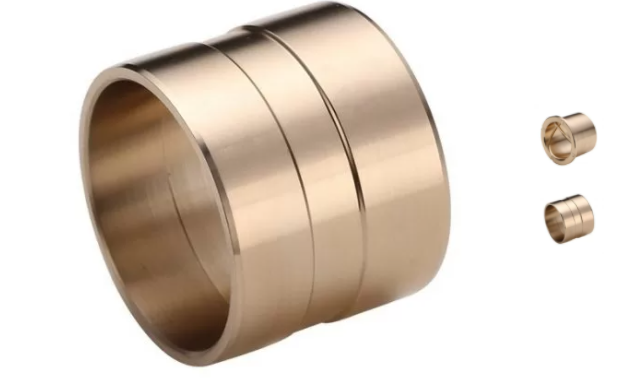
Shall you use bronze bushings or bearings for a particular application? A big number of machines use relative rotation between components to work. This is where you need a bearing system. In the simplest words, a bearing system is an engineered hole/shaft interface that allows relative rotation. A bearing has two parts. One of the parts is typically fixed and another rotates against the fixed part. Depending on the application, the design of a bearing system can be simple. It can be complicated as well. Complicated designs have multiple moving parts. It works as a part of a system to transmit motion. A complicated bearing system employs multiple components. Bearing systems are of two types. Each type comes with its limitations.
Journal Bearing
There are different names used for the simplest design of a bearing system. These names include the bushing bearing, the journal bearing or the plain bearing. This simple type consists of a shaft and a bushing. It is a hole/shaft interface. It allows rotational motion. The journal is the part that rotates within the bearing hole. This design requires external lubrication. The lubricating compound fills in the space between the hole and shaft.
It does not use an intermediary sliding or rolling element to facilitate motion. In addition to facilitating motion, bearings are also used to eliminate or minimize friction between components. Manufacturers use different materials to manufacture bearings. Some materials have low rolling/sliding resistance.
The construction of these bearings is very simple. However, this simple design is the most used design. It requires an active, reliable lubrication system. There are journal bearing systems that use no lubrication. However, these systems are used in applications with low speed and low load. Such bearing systems use polymer bushings. These polymer bushings are specified for the applications. However, the majority of applications require fully lubricated bronze bushings or bearings systems. It is important to consider the bearing system when designing machines. Preventive maintenance is important to ensure that the machine achieves and maintains its top performance and avoids issues. Bearing systems require lubrication. For maintenance and repair, bearing systems must be located in easily accessible areas of the machine.
The performance of the machine greatly depends on the efficiency of the bearing system. The performance of the bearing system greatly depends on the lubrication.
You must have a reliable lubricating system. If the lubricating system fails, the machine is also likely to fail. Speed is high in certain applications. If an active lubricating system does not work in such applications, consider the rolling contact bearing system.
Rolling Bearings/Ball Bearings
A bearing consists of a sliding or rolling component. A ball bearing/rolling bearing reduces friction. Friction between the stationary hole or moving shaft degrades the performance of the machine. A roller bearing or ball bearing is the most commonly used type of bearing. You can easily identify this type of bearing. This bearing design consists of an inner raceway fitted to the inner shaft.
It also consists of rolling elements. The rolling element can be conical rollers or balls. The bearing system has an outer raceway that contains the rollers or balls. This design facilitates relative motion between the outer raceways and inner raceways. Sometimes, exposure to environmental contaminants is not good for the system. This is the reason why the bearing cartridge containing the rolling elements is lubricated and sealed.
Hardened tool steel alloys are used to fabricate the rolling elements. Some applications require additional coatings to increase corrosion resistance and wear resistance.
Corrosion resistance, wear resistance, lubrication requirements and there are many other important factors you need to consider to choose bearings for an application.
You can buy all types of bearings online. Websites selling bronze bushings or bearings provide complete details such as properties, specifications and applications of a particular type of bearings.





